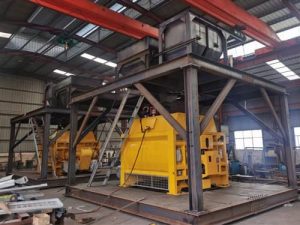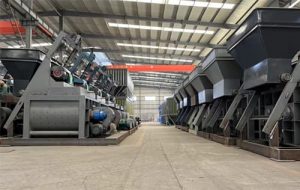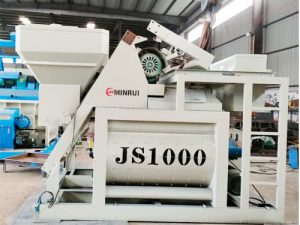Relative News
Products
As the core equipment of modern construction projects, the selection of concrete batching plant is directly related to the quality of the project, construction efficiency and economic benefits. This article will systematically explore the various factors that need to be considered when selecting a concrete batching plant, from basic types to technical parameters, from site planning to environmental protection requirements, from investment budget to later maintenance, to provide a comprehensive reference for project decision makers. By deeply analyzing the equipment configuration schemes under different application scenarios and combining the development trends of the industry, it helps readers make scientific and reasonable purchasing decisions to ensure that concrete production not only meets the current project needs, but also has long-term use value.
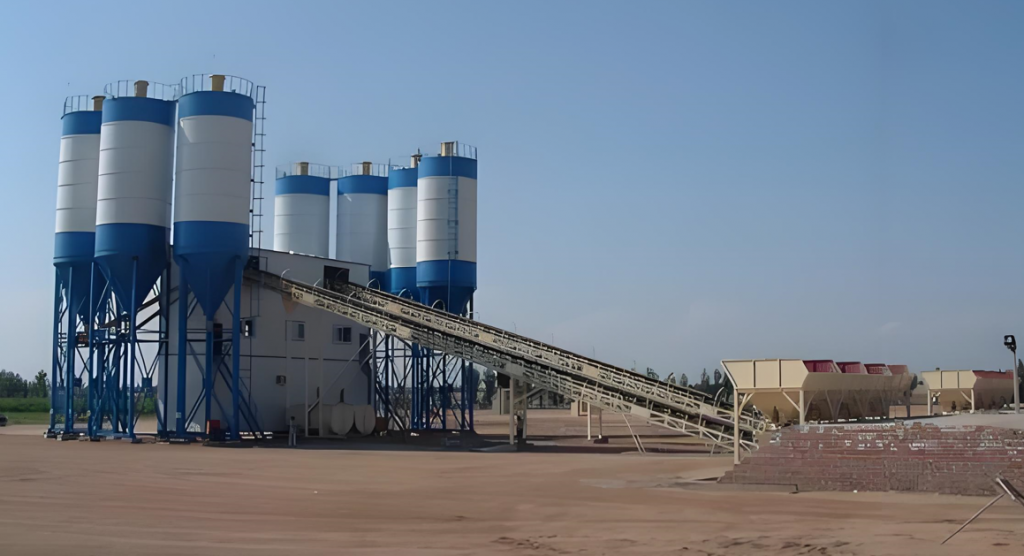
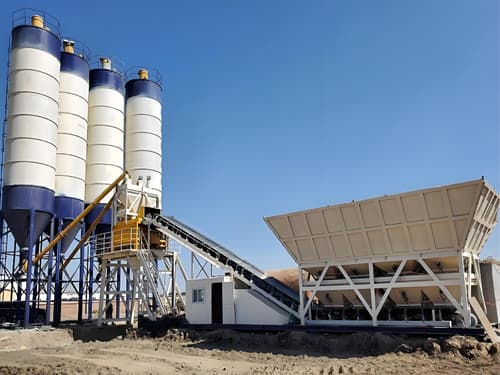
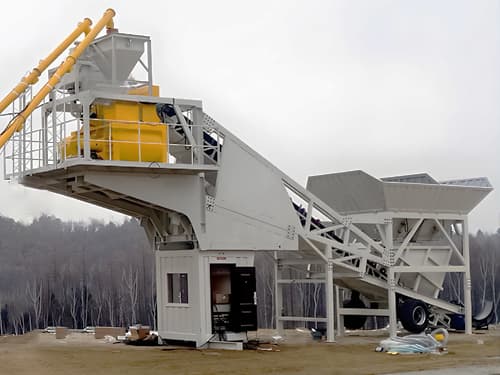


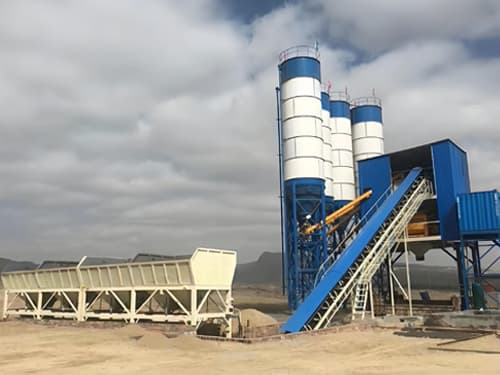
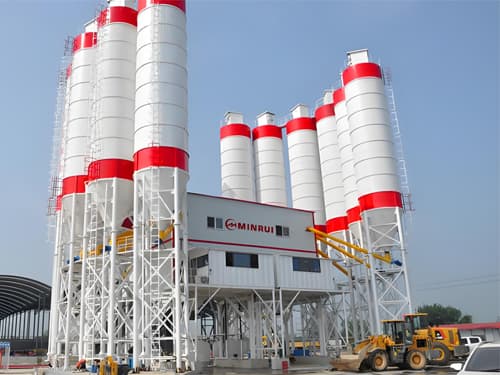
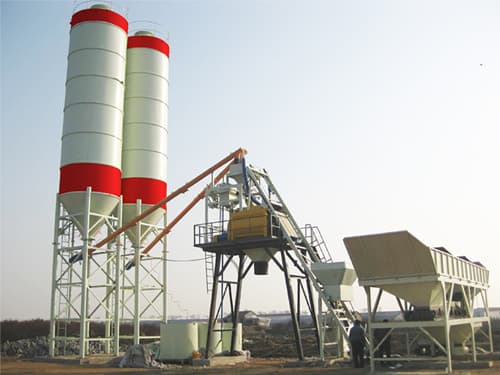
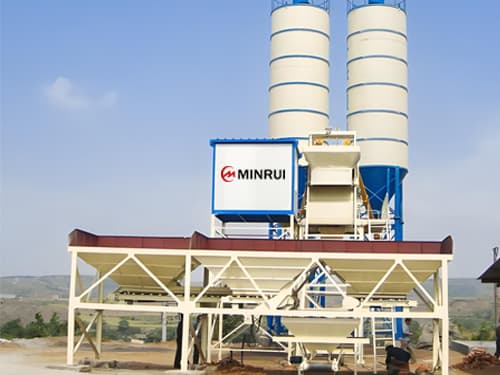
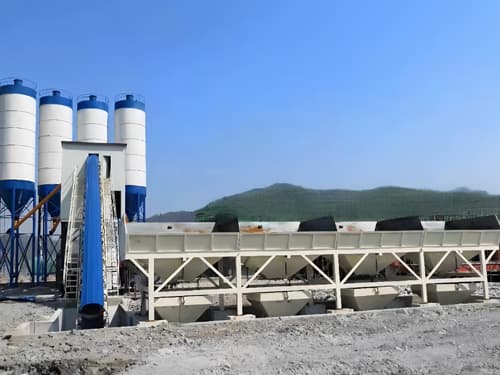
1. Overview and classification of concrete batching plant
Concrete batching plant are an important part of modern construction industrialization production. They mix cement, aggregates, water and admixtures in a certain proportion through mechanization and automation to produce concrete that meets engineering requirements. With the continuous development of construction technology, concrete batching plant have evolved from the initial simple mixing equipment to a high-tech complete set of equipment integrating mechanical, electrical, hydraulic and computer control, playing an irreplaceable role in various infrastructure construction, real estate projects and municipal engineering.
In terms of development history, concrete mixing technology has experienced an evolution from manual mixing to mechanical mixing, from mobile mixing to fixed concrete batching plant, and from simple control to fully automatic intelligent control. In the 1950s, the first generation of concrete batching plant began to appear, mainly using the principle of mechanical levers for control; after the 1980s, with the development of electronic technology, PLC control systems were introduced into concrete batching plant; in the 21st century, computer control, Internet of Things technology and artificial intelligence were gradually applied to the field of concrete production, making concrete batching plant develop in the direction of intelligence and greening.
According to the structural form, concrete batching plant can be mainly divided into two categories: mobile concrete batching plant and fixed concrete batching plant. Mobile concrete batching plant are usually installed on trailers or motor vehicles, with the characteristics of easy transfer and quick installation. They are suitable for short-term projects or construction projects that require frequent transfers, such as highway construction, water conservancy projects, etc. The production capacity of this type of concrete batching plant is relatively small, generally between 25-75m³/h. Fixed mixing plants are built on fixed sites. They are large in scale, highly automated, and have strong production capacity. They are suitable for commercial concrete production and large-scale long-term projects. The production capacity can range from 60m³/h to 240m³/h or even higher.
From the perspective of process layout, mixing plants can be divided into two main forms: step-type and horizontal. Step-type mixing plants (also called tower mixing plants) store aggregates at high altitudes and rely on gravity to complete the batching and mixing process. They have the advantages of small footprint and low energy consumption, but high civil engineering costs. The functional units of horizontal mixing plants are arranged horizontally, and aggregates need to be transported by belts or elevators. Although they occupy a large area, they are flexible to install and are suitable for areas with wide sites or poor foundation conditions.
According to the type of mixing host, concrete mixing plants are mainly divided into twin-shaft forced type, single-shaft forced type, and planetary type. Twin-shaft forced mixers have become the mainstream in the current market with their high mixing efficiency, uniform quality, and strong adaptability. They are especially suitable for mixing dry hard concrete and special concrete. The single-shaft mixer has a relatively simple structure and is easy to maintain, making it suitable for small and medium-sized mixing plants. Planetary mixers excel in the production of special concrete with their strong mixing action, but they have high energy consumption.
The difference in control systems is also an important criterion for distinguishing the types of mixing plants. Traditional relay control systems have gradually been replaced by PLC control systems, while advanced mixing plants use industrial computer control and have intelligent functions such as production management, ratio storage, and fault diagnosis. Modern high-end mixing plants are also equipped with remote monitoring systems, which can achieve remote monitoring and data transmission through the Internet, providing strong technical support for the quality management of concrete production.
Understanding these basic classifications will help decision makers preliminarily determine the direction of choice of mixing plants based on their own needs, but more specific factors need to be considered comprehensively when actually purchasing, which will be discussed in detail in subsequent chapters.
2. Determine production demand and scale parameters
Scientifically and rationally determining concrete production demand is the basic premise for selecting a mixing plant, which requires comprehensive consideration from multiple aspects such as project scale, concrete type, and construction period. Incorrect demand assessment may lead to improper equipment configuration, either causing waste of resources or failing to meet construction needs, which will directly affect the project benefits.
Production capacity is the core parameter for selecting a concrete batching plant, usually expressed in cubic meters per hour (m³/h). Two key factors need to be considered to determine production capacity: one is the total demand for concrete in the project, and the other is the construction schedule. For example, if a project with a total volume of 100,000 cubic meters is planned to be completed within 8 months, with 25 working days per month and 10 working hours per day, the minimum hourly production capacity should not be less than 100,000/(8×25×10)=50m³. The production imbalance coefficient (usually 1.2-1.5) should also be considered in the actual selection, so a concrete batching plant with a capacity of 60-75m³/h should be selected. It is worth noting that the nominal production capacity of the concrete batching plant is a theoretical value under ideal conditions. The actual output will be affected by factors such as batching speed, mixing time, and transportation organization, and can usually only reach 80%-90% of the nominal value.
The type of concrete also affects the selection of the concrete batching plant. Ordinary plastic concrete, dry hard concrete, self-compacting concrete or lightweight aggregate concrete have different requirements for concrete batching plant. For example, the production of high-performance concrete requires a more accurate metering system and a more efficient mixing host; while the production of permeable concrete requires consideration of whether the aggregate particle size range matches the equipment. If the project involves the production of multiple types of concrete, a more adaptable concrete batching plant should be selected, especially the mixing host must be able to meet the requirements of different ratios and consistencies.
The length of the project construction period determines whether to choose a temporary or permanent concrete batching plant. For short-term projects (1-2 years), mobile or simple concrete batching plant can be considered to reduce investment costs; for long-term projects (more than 3 years) or commercial concrete production, fixed, modularly designed concrete batching plant should be selected. Although the initial investment is large, the long-term operation reliability and economy are better. For commercial concrete batching plant, it is also necessary to consider the growth trend of regional market demand and reserve appropriate expansion space to avoid upgrading and transformation in the short term.
The work system is also an important consideration. A single shift (8 hours) a day and three shifts of continuous production (24 hours) have completely different requirements for equipment durability and reliability. Continuous high-intensity production requires the selection of key components (such as mixing mainframes, transmission systems, linings, etc.) with longer service life and higher configuration equipment, and at the same time, a more complete maintenance system.
Power supply conditions also restrict the selection of concrete batching plant. High-power concrete batching plant (especially those above 180m³/h) usually require high-voltage power supply (such as 10kV). If the construction site only has low-voltage power supply (380V), it is necessary to consider adding transformers or selecting multiple smaller-scale concrete batching plant in parallel. In areas with unstable power supply, the configuration of backup generator sets should also be considered to avoid interruptions in concrete supply due to power outages.
Climate conditions should not be ignored. In cold areas, concrete batching plant need to be equipped with aggregate preheating systems and warm water supply devices; in rainy and humid areas, material moisture-proof measures should be strengthened; in areas with strong winds and sand, closed structures should be considered to protect precision components. These special requirements should be considered together when selecting a concrete batching plant to avoid increasing costs for later modifications.
By comprehensively analyzing the above factors, the basic specifications and configuration requirements of the required concrete batching plant can be preliminarily determined, laying a scientific foundation for subsequent equipment selection and supplier selection. The ideal approach is to hire professional technicians or consulting firms to assist in the needs analysis, especially for large and complex projects. Professional needs assessment can avoid many potential problems later.
3. Technical evaluation of key components of concrete batching plant
concrete batching plant is a complex production equipment composed of multiple subsystems. The performance of each component directly affects the overall operation effect. In-depth understanding of the technical characteristics and evaluation criteria of key components will help to make accurate judgments when selecting and ensure that the quality of equipment meets long-term production needs.
As a core component, the selection of the mixing host is crucial. The mainstream in the current market is the twin-shaft forced mixer, which drives the blades to shear, extrude and convectively mix the materials through two mixing shafts rotating in opposite directions. It has the characteristics of high mixing efficiency, good homogeneity and wide adaptability. The following technical parameters should be paid attention to when evaluating the mixing host: rated capacity (usually 2/3 of the mixer discharge volume), mixing time (generally 30-45 seconds for ordinary concrete), motor power (related to capacity and design), blade and liner material (usually high chromium alloy wear-resistant cast iron) and replacement convenience. A high-quality mixing host should have the characteristics of large mixing torque, fast unloading speed (usually completed within 10-15 seconds), and no dead zone design. For special concrete production, the adaptability of the mixer to special materials such as fiber and large aggregates must also be considered.
The accuracy of the batching system directly affects the quality of concrete. Modern mixing plants generally use electronic weighing systems, which are composed of sensors, weighing instruments and control units. The weighing accuracy of aggregates should be within ±2%, and the weighing accuracy of cement, water and admixtures should be within ±1%. Batching speed is also an important indicator. Large mixing plants (above 180m³/h) usually require 4-6 aggregate silos, each with a capacity of 20-30m³, and are fed through fast pneumatic doors or belt conveyors. There are two ways to transport powder (cement, fly ash, etc.): screw conveying and pneumatic conveying. The former is simple to maintain but limited in distance, while the latter can be transported over long distances but has high energy consumption. Liquid batching systems need to pay attention to leak-proof design and cleaning convenience, especially admixture systems should have anti-crystallization measures.
The control system is the “brain” of the mixing plant, and its advanced level determines the production efficiency and management level. Modern high-end mixing plants generally adopt the control architecture of industrial computers + PLC, which has the following functions: formula storage and management (at least 200 formulas), production data recording and tracing, fault self-diagnosis and alarm, raw material consumption statistics, network remote monitoring, etc. The human-machine interface (HMI) should be intuitive and friendly, supporting touch operation and multi-language switching. Excellent control systems can also realize intelligent functions such as automatic error compensation, automatic correction of drop, automatic detection and adjustment of aggregate moisture content. When choosing, you need to pay attention to system stability, scalability and the technical support capabilities of suppliers. It is best to provide an open data interface to facilitate integration with the enterprise ERP system.
Aggregate conveying systems mainly include belt conveying and bucket lifting. Belt conveying is suitable for horizontally arranged mixing plants. It has the advantages of large conveying capacity, low energy consumption and low noise, but it occupies a large area. When choosing, you need to pay attention to the belt width (usually 650-1200mm), belt speed (1.25-2.0m/s), anti-deviation device and dust prevention measures. Bucket elevators are used for vertical transportation. They are compact but more complicated to maintain. Attention should be paid to the lifting capacity, chain/belt material, and anti-reversal device. For concrete batching plant with limited space, chute conveying or combined conveying solutions can also be considered.
The dust removal system is the key to environmental protection compliance, which mainly includes powder silo dust removal and mixing tower dust removal. The top of the powder silo should be equipped with a pulse back-blowing dust collector with sufficient filtration area (usually 3-4m² filtration area per 100 tons of silo capacity) and a filtration accuracy of more than 99.9%. The dust removal of the mixing tower needs to cover dust-raising points such as the feeding port and the observation port of the mixing host, and adopt centralized dust removal or dispersed dust removal. The air volume design of the dust removal system should be reasonable. Too large will increase energy consumption, and too small will affect the effect. Generally, the dust removal air volume of the mixing host is calculated at 30-50m³/h per cubic meter of capacity. The material of the dust removal filter element also needs attention. High-end products use anti-static, waterproof and oil-proof coated filter materials with longer service life.
The pneumatic system provides power for each actuator, including air compressor, gas tank, dryer, pipeline and valve. High-quality concrete batching plant will use oil-free air compressor (exhaust volume is usually 0.8-2.0m³/min), equipped with gas tanks of sufficient capacity (0.5-1.5m³) and refrigerated dryers to ensure clean and dry air source. Pneumatic components such as cylinders and solenoid valves should be selected from well-known brands (such as Festo, SMC, etc.) to ensure reliability and durability. The system design should be reasonable to avoid pressure loss caused by long-distance pipelines, and the pressure in key parts should be maintained at 0.6-0.8MPa.
The quality of steel structure directly affects the life and safety performance of equipment. The main structural steel should be Q235B or higher grade, and the key load-bearing parts need to be optimized by finite element analysis. The welding quality should meet the GB/T12467 standard, without false welding and leaking welding, and important welds need to be inspected. Anti-corrosion treatment is also critical. Usually, sandblasting is used to remove rust and then epoxy zinc-rich primer and polyurethane topcoat are sprayed. The thickness of the paint film is not less than 120μm. For seaside or highly corrosive environments, a higher level of anti-corrosion solutions, such as hot-dip galvanizing or stainless steel, are required.
When evaluating the quality of concrete batching plant components, you cannot just look at the configuration list. You also need to inspect the manufacturer’s production process and quality control system on site, and check the material certification and test reports of key components. If conditions permit, you should visit the actual operation site of the equipment to understand the performance changes and maintenance frequency after long-term use. Only by fully grasping the technical characteristics and quality standards of each component can you choose a truly durable and high-quality concrete batching plant.
4. Site planning and environmental compliance requirements
Scientific and reasonable site planning is the basic condition for the efficient operation of the concrete batching plant, and meeting increasingly stringent environmental regulations is a necessary prerequisite for the smooth implementation of the project. When selecting a concrete batching plant, you must fully consider the actual situation and environmental protection requirements of the installation site to avoid the risk of rectification or even suspension of production due to site unsuitability or non-compliance with environmental protection standards.
Site selection requires comprehensive consideration of many factors. The ideal location should be close to the main material point to reduce the distance of concrete transportation, but avoid noise-sensitive areas such as residential areas. The geological conditions require solid and flat, the bearing capacity is generally not less than 150kPa, the groundwater level should not be too high, and soft foundation or fill areas should be avoided. The shape of the site should be as regular as possible, and the length-to-width ratio should not be too large to facilitate process layout. At the same time, traffic convenience should be considered to ensure that the roads for raw materials to enter the site and concrete to leave the site are unobstructed, especially to meet the turning radius requirements of mixer trucks (usually 12-16 meters long). For commercial concrete batching plant, it is also necessary to consider the regional market coverage and competitive situation and conduct commercial site selection assessments.
The general layout should follow the principle of “smooth process flow, clear functional zoning, and short logistics”. A typical concrete batching plant can be divided into five functional areas: aggregate storage area (including coarse and fine aggregates of different specifications), powder storage area (cement, fly ash, etc. silos), production area (mixing host and batching system), office and living area, and vehicle turnover area. The distance between each area must comply with safety regulations. For example, the distance between the silo and the office area should be no less than 30 meters. The aggregate yard should be arranged in the upwind direction to reduce the impact of dust on the production area; the mixing plant should be close to the exit to shorten the distance of concrete transportation. The general layout design also needs to consider the possibility of future expansion and reserve space for equipment addition or upgrade.
Environmental protection requirements have become a key consideration in the selection of mixing plants. According to the latest environmental protection standards, mixing plants must take full enclosed measures, including aggregate silo closure, conveying system closure and mixing plant closure. The enclosed structure can be in the form of light steel structure + color steel sandwich panel or concrete wall + steel structure ceiling, and a spray dust reduction system must be installed inside. In terms of noise control, the noise at the mixing plant boundary should be lower than 60dB(A) during the day and lower than 50dB(A) at night. This needs to be achieved through the selection of low-noise equipment, installation of sound insulation covers, and setting up sound barriers. The wastewater treatment system needs to build sedimentation tanks and recycling devices to achieve zero wastewater discharge; waste residues (mainly cleaning residues and expired concrete) also need to be specially collected and treated, and can be considered for reuse as aggregates after crushing and screening.
The design of the aggregate storage system directly affects production efficiency and environmental performance. The open-air stacking method no longer meets modern environmental protection requirements, and fully enclosed material yards or silo storage should be used. Enclosed material yards are usually equipped with steel structure greenhouses with a span of up to 30-50 meters, and partition walls and ridge walls are set up inside. A more advanced solution is to use aggregate silos to completely eliminate dust, but the investment cost is relatively high. The material yard capacity should meet the production needs of 3-5 days, and aggregates of different specifications should be strictly separated to avoid mixing. The material yard ground needs to be hardened (the thickness of the concrete is not less than 200mm), and a drainage slope of 3%-5% is designed, and drainage ditches are set around to lead to sedimentation tanks.
The powder storage system usually uses vertical silos, and the capacity of a single silo is generally 100-300 tons. The number of silos is determined according to the type of materials, usually including cement silos, fly ash silos and mineral powder silos. Silos should be equipped with level meters (radar or heavy hammer type), arch breaking devices (pneumatic or mechanical) and safety valves. The design of silo foundations should take into account geological conditions and wind loads, and pile foundation treatment should be carried out if necessary. The layout of powder conveying pipelines should minimize elbows and reduce conveying resistance. Wear-resistant seamless steel pipes should be used as pipeline materials. For high-cold areas, heating and insulation measures for powder silos should also be considered to prevent material agglomeration.
Power and energy planning should not be ignored. Mixing plants are secondary power loads and usually require independent transformer power supply (capacity is determined according to the total power of the equipment, generally 200-800kVA). Cable laying should be done in a bridge or buried manner to avoid cluttered open wires. In terms of energy selection, in addition to electricity, clean energy such as natural gas (for aggregate heating) and solar energy (auxiliary lighting) can also be considered. Energy-saving design includes: selecting high-efficiency motors, variable frequency drive technology, heat recovery systems, etc. Although these measures increase initial investment, they can save a lot of energy costs in long-term operation.
Safety design must comply with relevant national regulations. The concrete batching plant should be equipped with a lightning protection system (grounding resistance ≤ 10Ω), a fire protection system (fire hydrant and fire extinguisher configuration) and an emergency shutdown device. Dangerous areas such as mixing platforms and the top of aggregate silos need to be equipped with protective railings (height ≥ 1.2m) and warning signs. The electrical system must have perfect grounding protection and lightning protection measures, and explosion-proof electrical appliances must be used in flammable and explosive areas. In addition, safety operating procedures and emergency plans should be prepared, and necessary safety protection supplies should be equipped.
In the site planning and environmental protection design stage, it is recommended to hire a professional design institute for overall planning to ensure compliance with national standards such as GB/T10171 “concrete batching plant (Building)” and the specific requirements of local environmental protection departments. At the same time, it is necessary to fully communicate with the equipment supplier to ensure that the size parameters of the selected concrete batching plant match the site conditions. Good site planning and environmental design can not only ensure smooth production, but also enhance the corporate image, create conditions for obtaining green building certification, and enhance market competitiveness.
5. Investment Analysis and Operation Cost Control
Choosing a concrete batching plant is not only an equipment purchase decision, but also a long-term investment behavior. Scientific and reasonable investment analysis and refined operation cost control directly affect the economic return and long-term competitiveness of the project. This section will systematically analyze the economic considerations and cost optimization strategies of concrete batching plant investment from the perspective of the whole life cycle cost.
The initial investment structure needs to be fully grasped. A complete set of concrete batching plant investment mainly includes: equipment purchase cost (about 60-70%), civil engineering cost (15-25%), installation and commissioning cost (5-8%) and auxiliary facilities cost (10-15%). The equipment purchase cost varies greatly depending on the configuration. Taking a 120m³/h concrete batching plant as an example, the price of domestic equipment is about 1.5-3 million yuan, while imported equipment can reach 4-6 million yuan. Civil engineering includes site leveling, foundation construction, steel structure workshop, etc. The cost is greatly affected by geological conditions and local labor material prices. Auxiliary facilities such as laboratory equipment, waste treatment systems, office facilities, etc. also need to be included in the budget. A reasonable approach is to prepare a detailed investment budget table, list all possible expenses, and reserve 10-15% for unforeseen expenses.
The choice of financing method affects the cost of funds and tax planning. Common options include: purchase with own funds, bank loans, financial leasing and operating leases. Purchase with own funds does not require interest payments, but occupies a large amount of working capital; bank loans can obtain asset ownership, but the approval process is longer; financial leasing has the advantage of “off-balance sheet financing”, with a low down payment ratio (usually 20-30%), but the total cost is higher; operating leasing is more flexible and suitable for short-term projects. When making decisions, it is necessary to comprehensively consider factors such as capital cost (interest rate), tax benefits (such as equipment deduction of value-added tax), and corporate cash flow status. For large-scale mixing plants (investment of more than 10 million yuan), project financing methods can also be considered, with future cash flow as the source of repayment.
Analysis of operating cost structure is the key to long-term profitability. The cost of concrete production mainly includes: raw material cost (about 60-70%), energy cost (8-12%), labor cost (10-15%), equipment maintenance cost (5-8%) and other expenses (such as transportation, testing, etc.). Among the raw materials, cement accounts for about 35-45% of the cost, aggregate 25-35%, and admixture 5-8%. Reducing operating costs requires starting from all aspects: optimizing the mix ratio to reduce cement usage, purchasing cost-effective raw materials, improving equipment energy efficiency, optimizing personnel allocation, etc. It is particularly worth noting that different concrete batching plant designs have a significant impact on operating costs. For example, the use of energy-saving motors, frequency conversion technology, heat recovery systems, etc., although the purchase cost is high, the long-term energy-saving effect is significant.
Equipment depreciation and life assessment affect long-term economic benefits. The depreciation period of the main equipment of the concrete batching plant is usually 8-10 years, but the actual service life can reach 12-15 years or even longer, depending on the quality of the equipment, maintenance level and usage intensity. High-quality concrete batching plant can still maintain a residual value of more than 75% after 10 years of use, while low-end products may need to be overhauled or eliminated. When evaluating the life of equipment, we should not only look at the main structure, but also pay attention to the replacement cycle and cost of wearing parts (such as mixing blades, liners, conveyor belts, etc.). When choosing, we should compare the service life data of key components of different brands and calculate the total replacement cost over the entire life cycle.
Capacity utilization is the core factor affecting the return on investment. The break-even point of a concrete batching plant is usually between 30-40% of capacity utilization, and the ideal state should reach more than 60%. Commercial concrete batching plant have obvious seasonal differences due to market demand fluctuations (capacity utilization may drop by more than 50% in winter in the north), and conservative estimates should be used when evaluating investments. Engineering concrete batching plant are relatively stable, but are greatly affected by the construction progress. Strategies to improve capacity utilization include: expanding market channels, developing long-term customers, providing differentiated products (such as special concrete), and undertaking outsourced production. For projects with more uncertain factors, you can consider leasing equipment for trial operation first, and then decide whether to purchase it after the market stabilizes.
A scientific financial model needs to be established for investment return analysis. Key indicators include: payback period (usually 3-5 years are acceptable), net present value (NPV), internal rate of return (IRR) and sensitivity analysis. Take a 120m³/h commercial concrete batching plant with an investment of 5 million yuan as an example. Assuming an annual output of 200,000 cubic meters and a profit of 30 yuan per cubic meter, the annual gross profit is 6 million yuan. After deducting fixed costs, the payback period is about 2-3 years. However, the actual calculation is much more complicated, and multiple variables such as concrete price fluctuations, raw material cost changes, and market competition situation need to be considered. Sensitivity analysis is particularly important. It is necessary to test the changes in returns under different capacity utilization rates, price levels and cost conditions to evaluate the project’s risk resistance.
Cost control strategies should run through the entire process of concrete batching plant operation. The main measures include:
Raw material cost control: Establish a supplier evaluation system to select the supplier with the best price under the premise of ensuring quality; bulk materials such as cement and fly ash can adopt long-term agreement prices to lock in costs; aggregates can consider self-built quarries or strategic cooperation with mines; strengthen the acceptance of incoming materials to prevent shortages or substandard quality.
Improve energy efficiency: select high-efficiency equipment such as variable frequency motors and energy-saving lighting; optimize production scheduling to reduce idle operation time; regularly maintain equipment to maintain optimal operating conditions; install sub-item metering instruments to monitor energy consumption in each link.
Optimize labor costs: concrete batching plant with a high degree of automation can reduce the number of operators, such as the use of unmanned automatic batching systems; promote multi-skill training to achieve multi-skills for personnel; arrange shifts reasonably to avoid waste of manpower during idle time.
Maintenance cost management: establish a preventive maintenance system, regularly replace wearing parts to avoid greater losses caused by sudden failures; reserve commonly used spare parts to shorten maintenance downtime; train own maintenance forces to reduce outsourcing service costs.
Reduce quality costs: strengthen process control to reduce the production of defective products; optimize the mix ratio to reduce costs while ensuring quality; invest in advanced testing equipment to detect quality problems early.
Management cost compression: introduce an information management system to improve work efficiency; streamline management processes to reduce unnecessary links; control non-productive expenses, such as travel and entertainment expenses.
The decision to invest in a concrete mixing plant cannot be based on experience or price alone, but should be based on detailed data analysis and scientific evaluation methods. It is recommended that enterprises conduct sufficient market research before making decisions, and hire professional consulting agencies to prepare feasibility study reports when necessary to comprehensively evaluate technical feasibility and economic rationality to avoid the risks of blind investment. At the same time, a sound operation management system should be established to achieve a cost-leading strategy through refined management and gain advantages in the fierce market competition.
6. Supplier selection and after-sales service evaluation
Choosing a suitable equipment supplier is as important as purchasing high-quality equipment. Excellent suppliers can not only provide reliable products, but also provide professional technical support and timely after-sales service to ensure the long-term and stable operation of the concrete batching plant. This section will systematically analyze the dimensions and methods of supplier evaluation, as well as the key elements of the after-sales service system, to provide decision makers with a comprehensive supplier selection guide.
Supplier qualification evaluation is the first step in the screening process. Qualified concrete batching plant manufacturers should have the following basic qualifications: ISO9001 quality management system certification, ISO14001 environmental management system certification, special equipment manufacturing license (such as pressure vessel related parts), CE certification (export to the European market required), etc. In addition, by checking the company’s registered capital, years of establishment, number of employees and other basic information, you can judge its scale and stability. Industry qualifications such as members of the China Construction Machinery Industry Association and AAA-level credit enterprises are also plus points. For large projects, suppliers can also be required to provide bank credit certificates and recent audit reports to assess their financial status. It is worth noting that there are some “OEM” suppliers on the market with limited actual manufacturing capabilities, and the actual production scale and technical level need to be verified through field visits.
R&D and manufacturing capabilities directly determine product quality. Excellent suppliers should have independent R&D teams and continuous innovation capabilities, and have multiple patented technologies (especially invention patents). In terms of production equipment, large structural parts require advanced processing equipment such as CNC cutting machines and automatic welding machines; precision parts such as mixing mainframes require dedicated assembly lines and testing equipment. The quality control system should include three links: raw material entry inspection, process inspection and factory inspection. Key components such as mixing blades should have material reports and hardness test data. When inspecting the factory, you should focus on details such as welding quality, anti-corrosion treatment, and assembly accuracy, which often reflect the company’s manufacturing level and management capabilities. If conditions permit, you can ask to visit the equipment being assembled to observe the workers’ operating norms and proficiency. Project experience and performance are important evidence of the supplier’s capabilities. Suppliers are required to provide a list of sales performance in the past three years, with special attention to cases similar to their own projects, such as concrete batching plant application examples of the same scale and similar working conditions. You can ask for user contact information for field visits or telephone interviews to understand the actual operating conditions of the equipment and service response. For large mixing plants (above 180m³/h), suppliers should have at least 5 successful cases; for special applications (such as nuclear power projects, offshore platforms), relevant experience is more important. Key engineering projects (such as high-speed rail, large hydropower stations, etc.) that suppliers have participated in can also prove the reliability of their equipment. In addition, export performance can reflect whether the equipment meets international standards and is an indirect proof of quality level.
Technical solution evaluation requires professionals. Suppliers should provide detailed technical solutions according to user needs, including equipment configuration instructions, process flow charts, general layout suggestions, electrical control system descriptions, etc. High-quality solutions will make personalized suggestions based on project characteristics, such as antifreeze measures for equipment in high-cold areas, and ratio management systems for multi-variety concrete production. When comparing solutions, attention should be paid to: the advancement of technical parameters (such as measurement accuracy, energy consumption indicators), the rationality of configuration (whether it is over-designed or insufficient), and the practicality of optional accessories. Pay special attention to the description of the control system. Excellent suppliers will explain the software functions, data management methods and expansion interfaces in detail, rather than simply listing PLC brands. Suppliers are required to provide the brand and origin of key components, and avoid vague statements such as “imported hydraulic system”.
The after-sales service system is the guarantee for long-term operation. A complete after-sales service system should include: clear response time commitment (such as arriving at the site within 24 hours), sufficient spare parts inventory (common spare parts inventory list), professional service team (number and qualifications of engineers), training plan (operation and maintenance training content), etc. Understanding the distribution of the supplier’s service outlets and whether it has localized service capabilities is crucial to reducing downtime. The after-sales service model must also be clarified, whether it is free service during the warranty period, or a year-round contracted service, or a pay-per-use model. Excellent suppliers will provide remote diagnostic services, monitor the status of equipment in real time through the Internet, and prevent potential failures. In addition, understand the supplier’s accessories price policy and whether it adopts a monopolistic high-price strategy, which will also affect long-term operating costs.
Negotiations on prices and payment terms require strategies. Mixing plant procurement usually adopts bidding or negotiation, and price comparisons should be based on the same configuration and technical standards to avoid simply comparing the total price. The payment terms are usually: 30% upon contract signing, 30% before delivery, 30% upon acceptance, and 10% warranty. For suppliers with good reputation, a more favorable payment ratio can be strived for, such as increasing the payment ratio after acceptance. The warranty period is usually 12 months, and key components such as the main mixer can be extended to 18 months. When negotiating prices, you can consider packaged purchases (such as installation, commissioning, training and other services) or long-term cooperation agreements (such as future accessories discounts) to obtain better conditions. But remember not to over-cut the price to cause the supplier to reduce the configuration or service quality. A reasonable profit margin can ensure long-term cooperation between the two parties.
The review of contract terms cannot be ignored. The technical agreement should list the equipment specifications, parameters, configuration and performance indicators in detail, and attach a detailed list of the scope of supply. The quality assurance clauses must clearly specify the acceptance criteria, test methods and liability for breach of contract. The intellectual property clauses must stipulate the ownership of technical information and confidentiality obligations. It is recommended to choose arbitration rather than litigation for dispute resolution clauses, which is more efficient. Pay special attention to small print clauses such as “exclusion of liability” to prevent suppliers from evading responsibility through vague statements. For large mixing plants, phased payments can be considered to be linked to milestones, such as paying a certain percentage after completing the factory acceptance test (FAT). It is recommended to hire a professional lawyer to review the contract, especially when it involves international procurement, and consider applicable laws and international trade terms (such as CIF, FOB, etc.).
The establishment of a long-term cooperative relationship is beneficial to both parties. After selecting a supplier, a mutual trust mechanism should be established through technical exchanges, joint training, etc. Suppliers can be invited to participate in equipment selection and even factory design to make full use of their expertise. Establish a regular communication mechanism, such as quarterly service review meetings, to jointly solve problems in operation. Excellent users will share operating data and improvement suggestions with suppliers to promote product iteration and upgrading. For large enterprises with multiple mixing plants, you can consider signing a strategic cooperation agreement with suppliers to obtain more favorable prices and priority service rights.
Selecting a mixing plant supplier is a multi-objective decision-making process that requires balancing multiple factors such as price, quality, and service. It is recommended to adopt a weighted scoring method to establish an evaluation system that includes technical parameters, price levels, after-sales service, corporate qualifications, etc., and organize technical, procurement, finance and other departments to participate in the evaluation. Avoid decisions made by a single department or individual to ensure that the selection process is scientific and transparent. Remember, excellent suppliers should be long-term partners, not just one-time transaction objects. This relationship will bring continuous value during the service life of the equipment for more than ten years.
7. Installation, commissioning and acceptance standards
The installation and commissioning of the concrete batching plant is the key stage for the equipment to become a reality from drawings. Scientific and standardized installation processes and strict acceptance standards are the basis for ensuring the long-term and stable operation of the equipment. This section will introduce in detail the various links and precautions of the installation and commissioning of the concrete batching plant, as well as the standard methods of acceptance testing, to provide users with a comprehensive quality control guide.
Preparation work before installation is crucial and is often overlooked, leading to subsequent problems. In terms of the site, it is necessary to ensure the completion of “three connections and one leveling”: access (unobstructed access to the equipment), water (construction water and domestic water), electricity (temporary construction electricity) and site leveling. The foundation construction must be carried out strictly in accordance with the requirements of the drawings, focusing on the following checks: the allowable deviation of the foundation size (±10mm), the position accuracy of the embedded parts (±5mm), the concrete strength grade (usually above C30) and the curing time (no less than 7 days). For large concrete batching plant, the foundation needs to be professionally surveyed and designed, and pile foundations should be used when necessary to avoid uneven settlement. At the same time, the lifting equipment required for installation (usually a 50-ton truck crane or more), tools, instruments and personnel protective equipment should be prepared. In terms of organization, a project team consisting of users, suppliers and installation units should be established to clarify the responsibilities and communication mechanisms of all parties, and to develop a detailed installation plan and safety plan.
Equipment on-site acceptance is the first step in quality control. Check the equipment and accessories one by one according to the supply list, check whether the appearance has any transportation damage, and whether the random documents (certificate of conformity, instructions, drawings, etc.) are complete. Focus on checking key components such as the shaft end seal and reducer model of the mixing host; whether the brand of components in the electrical cabinet meets the agreement; whether the welding quality and anti-corrosion treatment of steel structural parts meet the standards. If problems are found, take photos and record them immediately and notify the supplier to negotiate solutions. For imported equipment, customs clearance documents and commodity inspection reports must also be checked. Equipment storage should also be arranged reasonably. Precision electrical components should be placed in a drying room, large structural parts should be leveled to prevent deformation, and small parts should be stored in categories to avoid loss.
The installation of the mechanical part should follow the order of “main body first, then accessories, large parts first, then small parts”. The typical installation process is: mixing host in place → aggregate batching station installation → powder barrel assembly → conveying equipment installation → dust removal system installation → gas system installation. The installation of the main mixer should ensure the horizontality (≤1/1000), and the secondary grouting should be used for adjustment after the shim iron is used; the installation of the aggregate silo should pay attention to the sealing of the partitions of each silo to prevent the material from being mixed; the assembly of the powder barrel should use the theodolite to ensure the verticality (≤1/1000 of the full height); the installation of the belt conveyor should adjust the roller group to ensure that the belt does not deviate. All bolt connection parts should be tightened in batches according to the specified torque value (such as the torque of 8.8-grade M20 bolts is about 400N·m), and rechecked after 72 hours of operation. Mechanical installation places special emphasis on process inspection. Each completed link needs to be specially inspected and signed for confirmation to avoid rework.
The installation of the electrical system is related to equipment safety and control accuracy. Cable laying should follow the principle of “separation of strong and weak electricity, separation of analog and digital” to avoid interference. Power cables (such as the motor of the main mixer) and control cables (such as sensor signals) need to be separated from the bridge wiring, with a spacing of not less than 300mm. The wiring terminals should be crimped firmly and marked, and key signal lines such as weighing sensors should use shielded cables and single-point grounding. The lightning protection grounding system should be set up separately, with a grounding resistance of ≤4Ω, and all electrical equipment housings should be reliably grounded. When installing the control cabinet, pay attention to the heat dissipation conditions, do not place any items on the top, and the cabinet door grounding wire should be well connected. Modern mixing plants usually use fieldbus technology (such as Profibus, CANopen, etc.). When installing, pay special attention to whether the terminal resistance setting and bus address allocation are correct.
The installation of hydraulic and pneumatic systems must be kept highly clean. The hydraulic pipeline needs to be pickled and passivated before installation. During assembly, use special flushing equipment to circulate and flush until the oil cleanliness reaches NAS level 7 or above. A torque wrench should be used to tighten the joints to avoid damaging the seals by overtightening. When installing the pneumatic system, ensure that the compressed air is dry and clean. The main pipeline is set with a slope of 1-2° and a drain valve is installed at the lowest point. The branch pipe is led out from the top of the main pipeline to avoid condensation water from entering. The pneumatic triplex (filter, pressure reducing valve, oil mist collector) should be installed close to the actuator to ensure easy adjustment. The system pressure debugging should be carried out in stages, first running at low pressure to check for leaks, and then gradually increasing to working pressure.
The debugging process should be implemented in a systematic and step-by-step manner. The principle of safe debugging is “stand-alone first, then online, no-load first, then load”. Typical debugging steps include:
Electrical inspection: confirm that the power supply voltage is normal, measure the insulation resistance (≥1MΩ), check the emergency stop circuit function, and test the direction of each motor by jogging.
Pneumatic test: adjust the system pressure to 0.6-0.8MPa, test the action speed of each cylinder and the buffer effect at the end of the stroke, and check the leakage rate (pressure drop ≤0.02MPa after maintaining pressure for 10 minutes).
Mechanical trial operation: remove the internal transportation fixture of the mixing main machine, manually turn the wheel to confirm that there is no obstruction, and monitor the bearing temperature rise (≤35℃) and noise (≤85dB) during no-load operation for 2 hours.
Measuring calibration: use standard weights to calibrate the aggregate scale (accuracy ±2%), powder scale and water scale (accuracy ±1%), and perform multiple repeatability tests (coefficient of variation ≤1%).
Control system test: check the response of each function button on the operation interface, simulate fault test alarm system, and verify the formula management and production report functions.
Linkage test: Run the equipment in linkage mode without load according to the process flow, test the start-stop sequence and interlock protection function of each equipment, such as the aggregate door cannot be opened when the mixer is not started.
Load test: Use actual materials for trial production, gradually increase the load from 30% to 100%, and check the operating status of each system and the homogeneity of concrete.
The acceptance test standard should be agreed upon in the contract, usually including performance test and durability test. The main indicators of performance test are: production capacity (continuous production for 3 hours to reach more than 95% of the rated output), mixing time (ordinary concrete reaches homogeneity within 45 seconds), metering accuracy (aggregate ±2%, powder ±1%, water ±1%, admixture ±0.5%), unloading time (≤15 seconds), etc. The durability test is carried out for 8 hours of continuous full-load production to check whether the equipment temperature rise, vibration and noise are normal. The acceptance test needs to form a written report, recording all test data and signatures of all parties. For unqualified items, the supplier should complete the rectification and retest within the specified time.
Operation training is an important part of acceptance. Suppliers should provide a systematic training plan, including:
Theoretical training: equipment structure principle, control system function, safe operation procedures, daily maintenance points, etc., with a class time of no less than 8 hours.
Practical training: actual production operation under the guidance of engineers, including formula input, production startup, operation monitoring, fault handling, etc., each operator independently operates no less than 10 complete cycles.
Maintenance training: lubrication point identification, wearing parts replacement method, daily inspection list, etc., focusing on training electromechanical maintenance personnel.
Management training: production data export analysis, user parameter setting, authority management, etc., for management personnel.
An assessment should be conducted after the training, and those who pass the assessment will be issued an operation certificate. At the same time, the supplier should provide complete technical documents, including but not limited to: equipment general diagram, electrical schematic diagram, PLC program (encrypted), operation manual, maintenance manual, accessories list, etc.
